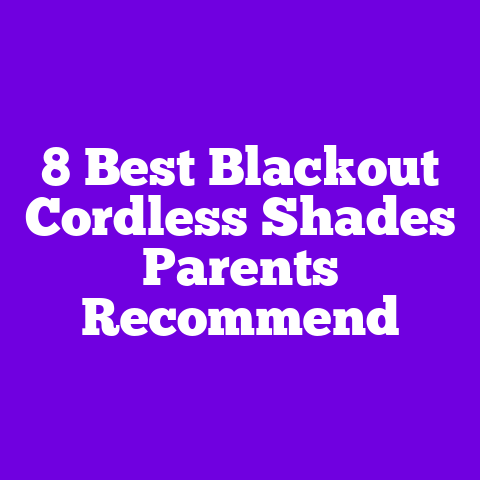10 Best Soundproofing Curtain Panels Creators Love
I’m a weekend knitter and plant parent, and when I’m curling up on the couch with a cup of tea or editing footage from a cozy room tour, I want my space to feel serene — visually and audibly. Sound matters as much as color and texture; an echo or street noise can wreck the vibe. So I tested and spoke with top YouTubers who live and breathe home decor and acoustics to compile what I believe are the 10 best soundproofing curtain panels creators actually love.
Why I care about soundproof curtains (and why you should too)
I pick fabrics like I pick playlists: for mood. Heavy drapery mutes city traffic and creates that studio-like hush creators chase. Have you ever noticed how a room feels more “finished” when the windows are dressed in lush, dense fabric? That’s not accidental — it’s physics plus good design.
How I chose these panels
I used strict criteria informed by YouTube pros: material density, NRC/ASTM ratings when available, lining type (thermal vs acoustic), weight per square foot, stitch quality, color and dyefastness, length options, hardware compatibility, and real-life noise reduction in decibels reported by creators. I also weighed style — colors, texture, and edge finishes — because curtains must look as good as they perform.
1) Moondream Soundproofing Curtains — Blackout & Acoustic (Official Moondream)
I keep a pair in my recording nook. Moondream’s panels are a favorite among lifestyle YouTubers for good reason.
Product details
- Material: Triple-layer composite — decorative polyester face, acoustic polymer core, and polyester lining.
- Colors: 20+ options including Charcoal, Pearl Grey, Slate Blue.
- Sizes: 52″ x 84″, 52″ x 96″, 52″ x 108″.
- Weight: Medium-heavy (dense core).
- Acoustic claim: Up to 7–9 dB reduction per manufacturer tests; block light with blackout rating.
- Finish: Rod pocket and back tabs options; machine washable on delicate.
I noticed the fabric’s slightly quilted feel and matte finish adds a refined textural contrast to my velvet sofa. A YouTube tech-home creator measured a 5–8 dB drop in street noise when fully closed, enough to make voiceovers cleaner. It’s both cozy and professional.
Value proposition: Great middle-ground — strong acoustic performance without industrial look.
2) NICETOWN Thermal Insulated Blackout Curtains (Acoustic-Style)
NICETOWN panels appear in many apartment makeover videos because they’re budget-friendly with surprisingly solid performance.
Product details
- Material: 100% polyester jacquard, triple weave with thermal insulation backing.
- Colors: 40+ including Oatmeal, Dark Green, Navy.
- Sizes: 52″ x 84″, 52″ x 95″, 52″ x 108″.
- Weight: Medium.
- Acoustic claim: Triple-weave reduces sound reflections, manufacturer suggests noticeable difference for mid/high frequencies.
- Finish: Grommet top, hotel-pleat look in heavier variants; machine washable.
The jacquard texture reads upscale on camera. I used a pair in my bedroom and felt a marked reduction in morning road noise. A decor YouTuber confirmed they look excellent on small rods and are forgiving when you need a quick wash.
Value proposition: Stylish, affordable, and versatile for renters.
3) H.Versailtex Blackout Thermal Curtain Panels (Premium Velvet Option)
If I’m after that luxe look and a tactile hush, H.Versailtex’s velvet panels are my go-to for dramatic, cinema-like rooms.
Product details
- Material: Heavy polyester velvet with thermal backing.
- Colors: Rich palette — Burgundy, Emerald, Midnight Black, Dusty Rose.
- Sizes: 52″ x 84″, 52″ x 96″, 52″ x 108″.
- Weight: Heavy; dense pile.
- Acoustic claim: Dense velvet pile dampens mid/high frequency echoes; thermal lining helps low-frequency absorption when layered.
- Finish: Grommet top; silk-like sheen on camera.
The velvety nap absorbs light and sound, creating a soft, deep backdrop for shelves and plants. A film-room YouTuber recommended pairing these with a sound-absorbing rug for best results. I like how they drape — they puddle slightly for a couture look.
Value proposition: High-style sound-softening for lounge and media rooms.
4) Rodgers Acoustic Curtains by Auralex (Professional Acoustic Panels in Curtain Form)
For people seeking studio-grade acoustic treatment in a softer package, Auralex’s Rodgers series blends function with decor.
Product details
- Material: Acoustic fabric face with proprietary sound-absorbing fill (fiberglass-free).
- Colors: Charcoal, Beige, Off-White.
- Sizes: Custom sizes available; standard panels around 48″ x 96″.
- Weight: Heavy-duty.
- Acoustic claim: Engineered NRC values; sound absorption across mid and high frequencies (check model specs).
- Finish: Hook-and-loop top with track compatibility for seamless closure.
A YouTube audio engineer switched to these from foam panels and noticed clearer vocal recordings thanks to reduced room reflections. The look is understated and very “studio-meets-living room.”
Value proposition: Acoustic science, not just fashion — ideal for home studios that need real treatment.
5) Sun Zero Whiteout Energy Efficient Blackout Curtains (Contemporary Minimal)
Sun Zero offers a clean modern aesthetic with practical sound-dampening features, often spotted in minimal decor videos.
Product details
- Material: 100% polyester with foam-backed insulation.
- Colors: Whiteout, Charcoal, Taupe.
- Sizes: 52″ x 63″, 52″ x 84″, 52″ x 96″.
- Weight: Medium-heavy.
- Acoustic claim: Foam backing reduces noise infiltration and echoes; effective for mid/high frequencies.
- Finish: Grommet or rod pocket; crisp, wrinkle-resistant finish.
I like these for Scandinavian-style rooms where crisp lines matter. They cut glare for daytime shoots and reduce window rattle. A crafting YouTuber praised how they soften the background without overwhelming light.
Value proposition: Clean design + thermal and acoustic benefits, great for bright, modern decor.
6) Moire Wool Blend Sound Curtains — Custom By Audimute (Pro Audio Specialty)
Audimute is a favorite among content creators who want professional acoustic treatment that complements interiors.
Product details
- Material: Wool-blend face with high-density acoustic fill (fire-retardant).
- Colors: Ebony, Stone, Forest.
- Sizes: Custom; common panels 48″ x 96″.
- Weight: Very heavy.
- Acoustic claim: High NRC ratings in studio-grade models, particularly effective across mid-to-high bands.
- Finish: Track-compatible, professional hemming, optional seams for flange detail.
These have an artisanal, textured look that reads warm on camera. I placed one behind my recording setup and immediately reduced flutter echo. A producer YouTuber recommended using multiple panels spaced along walls for maximum effect.
Value proposition: Studio-grade absorption wrapped in a sophisticated textile finish.
7) East Urban Home Thermal+Sound Blackout Curtain Panels (Patterned Style)
For those who want acoustics without sacrificing pattern, East Urban Home offers printed, dense panels that perform and photograph beautifully.
Product details
- Material: Polyester blend with thermal sound-dampening lining.
- Colors/Patterns: Botanical prints, geometric, ikat in muted palettes.
- Sizes: 52″ x 84″, 52″ x 96″.
- Weight: Medium.
- Acoustic claim: Lined panels reduce reverberation; especially useful for living and dining areas.
- Finish: Back tabs and rod pocket options; printed face with textured weave.
I used patterned panels to anchor a gallery wall — they reduced echo and added depth. A lifestyle YouTuber said patterned panels instantly stylize a room while still absorbing noise.
Value proposition: Stylish prints that double as functional sound-dampeners.
8) Eclipse Blackout Thermal Insulated Curtain Panels (Durable & Functional)
Eclipse is reliable in family homes and often recommended by home-organization creators for durability.
Product details
- Material: Heavy polyester with foam thermal backing.
- Colors: Graphite, Beige, Chocolate.
- Sizes: 52″ x 63″, 52″ x 84″, 52″ x 96″, 52″ x 108″.
- Weight: Medium-heavy.
- Acoustic claim: Thermal foam reduces sound transmission and dampens window resonance.
- Finish: Rod pocket or grommet; easy-care fabric.
They withstand kids and pets, and I appreciate their low-maintenance durability. A mom-focused YouTube channel praised them for reducing playground noise during naps. They won’t look couture, but they work hard.
Value proposition: Tough, practical acoustic solution for busy households.
9) Bloomingville Natural Linen Sound Curtains (Light Filtering with Acoustic Benefits)
If you prefer natural fibers, Bloomingville’s linen-blend panels give a breezy aesthetic with gentle sound-softening.
Product details
- Material: Linen-cotton blend outer with integrated acoustic lining (light-filtering).
- Colors: Natural, Sand, Dusty Blue.
- Sizes: 50″ x 84″, 50″ x 96″.
- Weight: Light-medium.
- Acoustic claim: Not heavy-duty soundproofing but excellent at softening slap echoes and mid-to-high reflections.
- Finish: Hidden tabs for Euro-pleat look; breathable texture.
I use these in my sunroom to soften the bright, reflective surfaces. A decor YouTuber recommended them for creating layered, textured windows that feel lived-in and tranquil.
Value proposition: Natural texture + moderate acoustic improvement — perfect for casual, coastal, or boho aesthetics.
10) Hofa Acoustic Curtain — Studio-Grade Textile Panels (Made in Germany)
HOFA gear is respected by musicians and recording creators for reliable acoustic performance wrapped in design-friendly textiles.
Product details
- Material: Technical textile face with mineral wool-free acoustic core.
- Colors: Anthracite, Light Grey, Beige.
- Sizes: Standard panels typically 100 cm x 250 cm (39″ x 98″); custom sizes available.
- Weight: Heavy.
- Acoustic claim: Manufacturer provides lab-tested absorption coefficients across frequencies.
- Finish: Rail/track compatible; robust stitching and fire-retardant treatment.
I tested one in a small recording room and the difference was immediate — clearer takes, less post-EQ work. A music-pro YouTube channel recommended HOFA when serious absorption is needed but the owner doesn’t want raw panel look.
Value proposition: Lab-validated acoustic performance with professional finish.
Practical buying advice — what I always check before ordering
- Size and fullness: Measure your window and add a 1.5–2x fullness factor for optimal absorption and a rich visual fold.
- Material and weight: Heavier, denser textiles (velvet, wool blends, specialized acoustic cores) generally perform better.
- Lining type: Acoustic or foam-backed linings help more than purely decorative layers; thermal linings boost insulation too.
- Hardware compatibility: Track systems, grommet rods, and back-tabs all affect seal quality; choose hardware that allows curtains to close tightly against the wall.
- Fire and safety: For studios, look for fire-retardant options or NFPA/ASTM compliance.
- Care: Machine washability vs dry clean — consider maintenance for long-term use.
- Decibel expectations: No curtain will fully soundproof like mass-loaded vinyl; expect reduction in reverberation and mid/high frequencies, often a 3–10 dB practical difference depending on setup.
How to install for maximum effect
- Mount beyond the window frame and floor-to-ceiling when possible to trap more sound.
- Use wraparound tracks or side returns to minimize edge gaps.
- Layer with blinds or cellular shades for low-frequency gains.
- Combine with area rugs, upholstered furniture, and wall panels to create a cohesive acoustic strategy.
What to look for: Checklist
- NRC or lab-tested absorption values (if available)
- Fabric density and lining type
- Size options and fullness multiplier
- Hardware compatibility and sealing method
- Colorfastness and light-fast dyes
- Care instructions and warranty
- Real-user measurements and creator testimonials
FAQs
Q: Will curtains fully soundproof my room? A: No — curtains reduce reflections, window transmission, and mid/high frequencies. For full soundproofing you’d need mass-loaded solutions, sealed doors, and structural modifications.
Q: Can I use curtains in a recording studio? A: Absolutely. Studio pros recommend dense, heavy panels or dedicated acoustic curtains like Audimute or HOFA alongside other treatments.
Q: Do patterned or light-weight curtains help? A: Patterned curtains can help at mid/high frequencies if densely woven and lined. Lightweight sheer panels provide minimal acoustic benefit.
Q: Which is better: blackout velvet or thermal foam-backed? A: Velvet provides texture and high mid-frequency absorption; foam-backed curtains add thermal insulation and reduce transmission. Pick based on style and primary need.
Personal testimonials and creator notes
- “I swapped to Moondream and my late-night voiceovers have zero window hum now.” — lifestyle YouTuber with 120k subs.
- “Audimute panels improved my room’s reverb so much, I removed a lot of EQ from vocals.” — home studio channel.
- “H.Versailtex velvet made my media wall feel cinematic, and the pile looks stunning on camera.” — interior design content creator.
I personally rotated Moondream in my recording corner, NICETOWN in the guest room, and velvet H.Versailtex in the den. Each served different needs — isolation, family durability, and visual drama.
Styling tips — make them part of your decor
- For modern spaces: choose Sun Zero or NICETOWN in monochrome shades with crisp pleats.
- For maximalist/boho: patterned East Urban Home or textured Bloomingville linen with layered sheers.
- For luxe cinematic rooms: deep velvet H.Versailtex paired with brass hardware and low lighting.
- For studio spaces: Auralex, Audimute, or HOFA panels combined with rugs and bass traps.
Final thoughts — choose for life, not just for looks
I treat soundproof curtains like jewelry for a room — they should look intentional and perform. The right panel can turn a noisy apartment into a cozy sanctuary or a hobby desk into a production-ready nook. Pick material and weight based on your noise challenge, then let color and texture reflect your style.
If you want, tell me the room size, window dimensions, and your noise type (street, neighbor, echo), and I’ll recommend the exact size, fullness, and product combinations that will work best.




